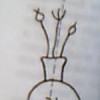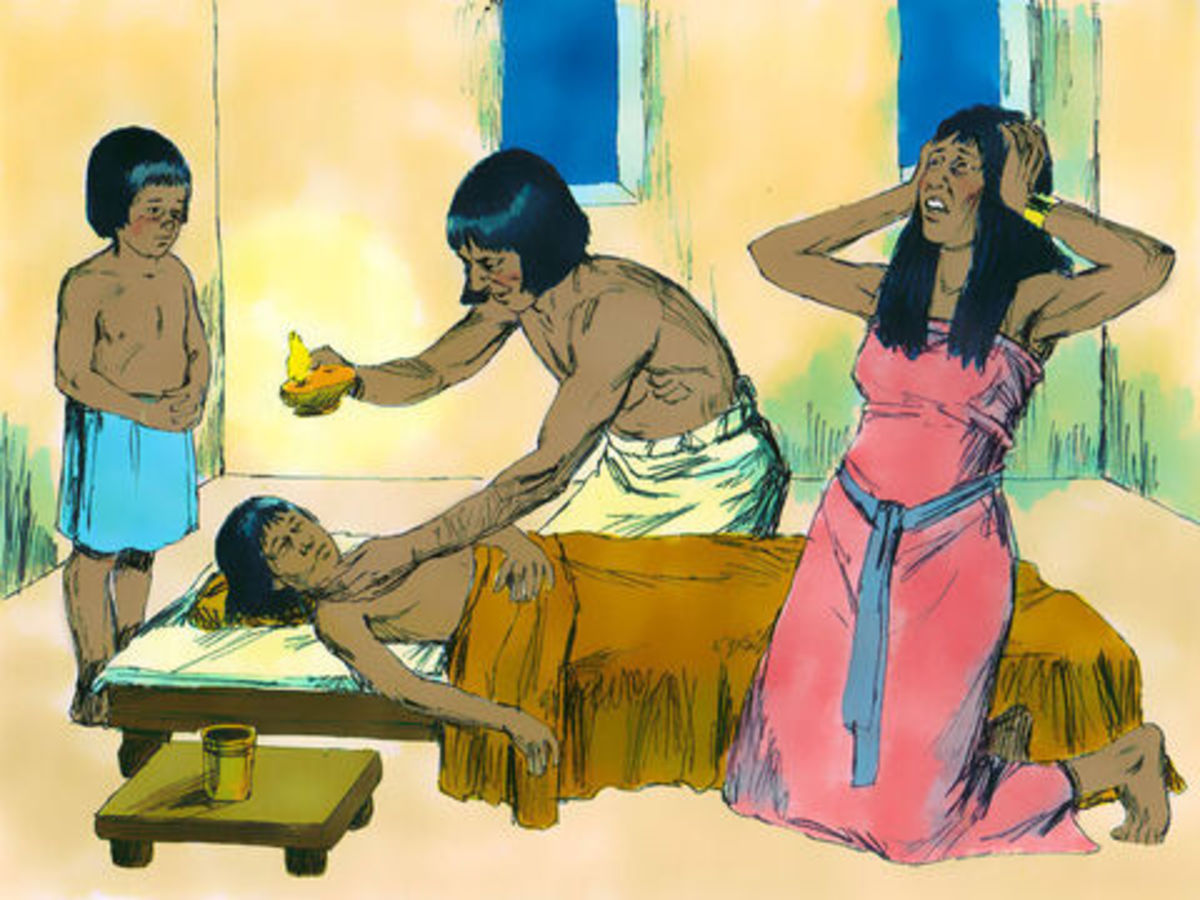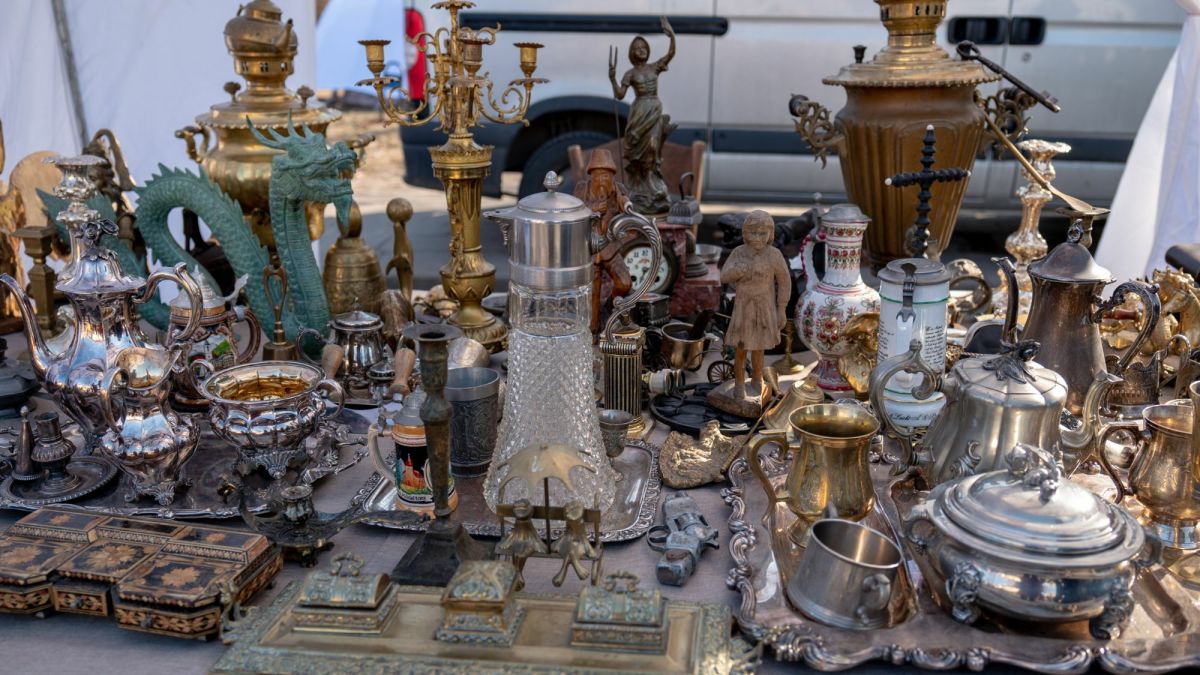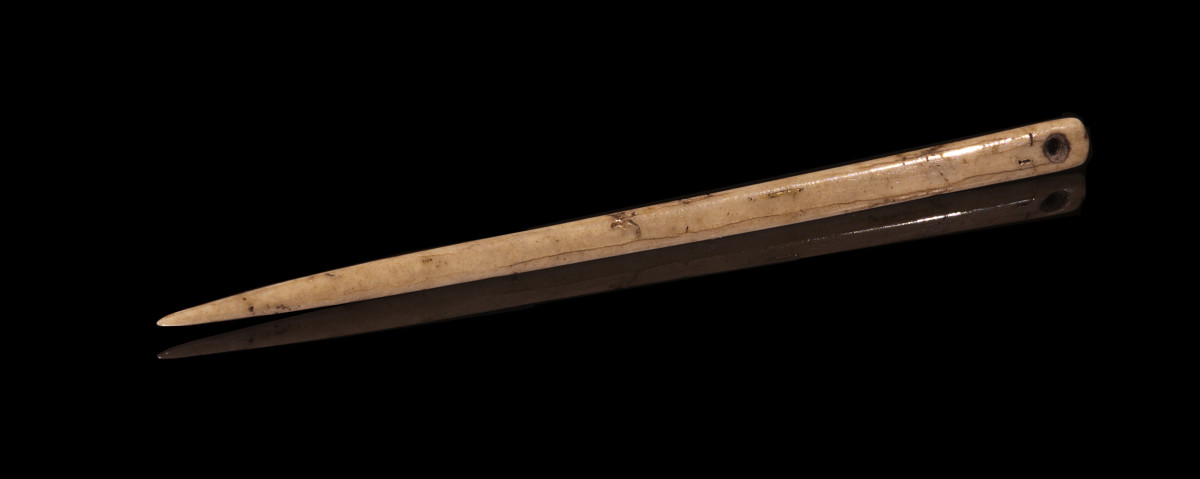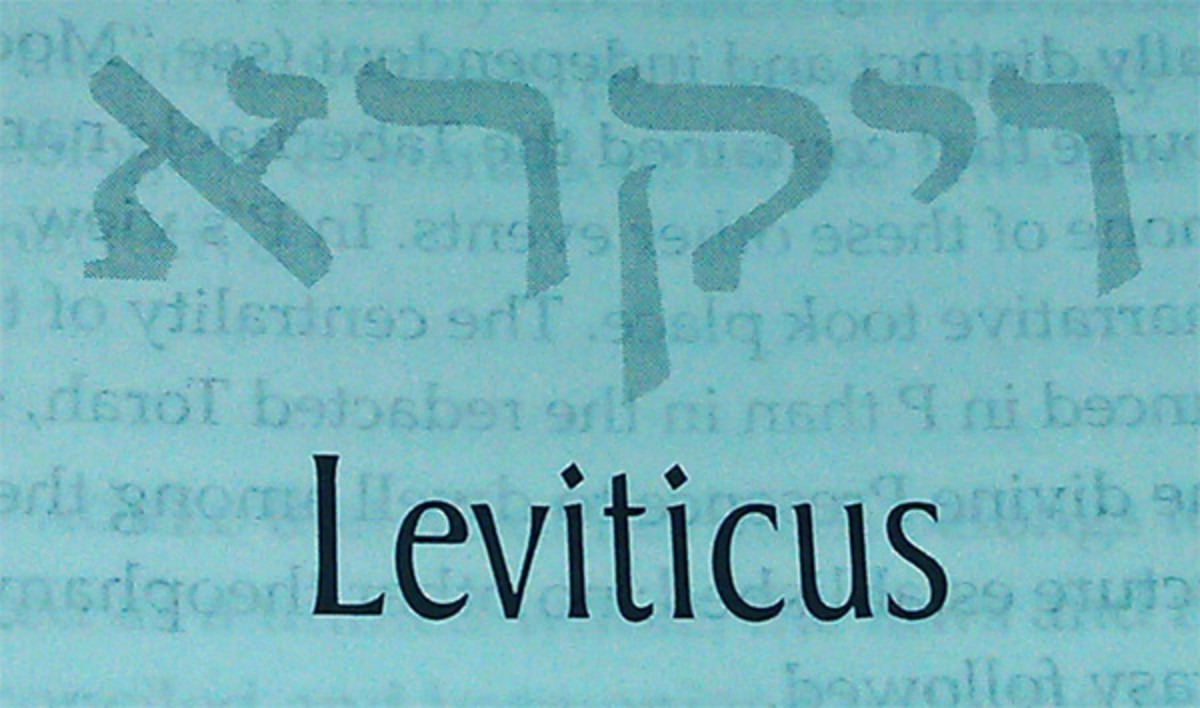From the Sacred Books
The Art of Jewelry as a Socio-Artistic Phenomenon of the Ancient Civilizations
From the sacred books of the Torah
We have therefore brought an oblation for YAHWEH, what every man has gotten, of jewels of gold, chains, and bracelets, rings, earrings, and tablets, to make an atonement for our souls before YAHWEH. And Moshe and Eleazar the Cohen took the gold of them, even all wrought jewels. And all the gold of the offering that they offered up to YAHWEH, of the captains of thousands, and of the captains of hundreds, was sixteen thousand seven hundred and fifty shekels. (For the men of war had taken spoil, every man for himself.) And Moshe and Eleazar the Cohen took the gold of the captains of thousands and of hundreds, and brought it into the tabernacle of the congregation, for a memorial for the children of Israel before YAHWEH. (BEMIDBAR - NUMBERS 31:50 – 31:54).
And he shall deliver their kings into your hand, and you shall destroy their name from under heaven: there shall no man be able to stand before you, until you have destroyed them. The graven images of their gods shall you burn with fire: you shall not desire the silver or gold that is on them, nor take it unto you, lest you be snared therein: for it is an abomination to YAHWEH your ABBA. Neither shall you bring an abomination into your house, lest you be a cursed thing like it: but you shall utterly detest it, and you shall utterly abhor it; for it is a cursed thing.( DEVARIM - DEUTERONOMY 7:24 – 7:26).
One of the most ancient forms of expression, art of jewelry embodies rich spiritual and applied experience of processing historical and cultural information. Modern art historians pose many questions regarding this process and its mechanics. This paper attempts to solve these questions using the following conceptual scheme:
A B
1) The art of jewelry making is the product and indication of a material and socio-cultural development of society.
A: The level of material development: metal processing plus decorating (handling) with precious stones – prerequisites for the tangible basis for the art; hierarchy of precious metals and stones; jewelry art=goods=money.
B: development of ritual conscience in decorative-ornamental and plastic means; social hierarchy/ ethnic differentiation/ + hierarchy of metals = attributive side of art; protective/suggestive-symbolic/ = handcraft and artistic functions = content-rich area of art.
As one can see from the above scheme, both groups, A and B, while having autonomous qualities, develop in parallel. The common ground is social hierarchy along with the hierarchy of metals. As a result, the art of jewelry symbolizes one of the most ancient examples of organic art fusion – handcraft, ritual and commerce. Art has its own language, filled with specific grammatical instances of foundation of shape and ornament. We suggest that one of the defining factors of material culture is based on the symbiosis of the Oriental devotion to complex rituals of poetic behavior, luxury and splendor of décor, with the European figurative vision of art. The Holy Scriptures, including texts from the Torah, serve as an invaluable source of understanding of how art language matures.
The Pentateuch, or the writings of the Torah, was combined into one volume approximately in the 5 century BC. Most of the text was written in 9-7 centuries BC. Events described in the Torah paint a universal picture of the universe and reflect the syncretism of artistic and ritual consciousness of men in the early civilizations. Scientists believe that historical events described in the books of the Torah (Bereishet, Shemot, Vayikra, Bamidbar, Devarim) happened in the second half of the II millennium BC, allegedly during the rule of the 19 dynasty in Egypt (1305-1196 BC). Archeological excavations, as well as ethnographical findings, validate the parts of the Torah where the art of jewelry is mentioned.
Literature dedicated to the history of Israeli jewelry is based mostly upon archeological research (see 11); works of popular science nature, as well as challenging and debatable publications (see 12). History of jewelry is still waiting to be studied in earnest; this much-needed fundamental research is all the more needed, considering that the art of the ancient jewelers developed in a single stylistic movement with other forms of art. Thus, the artistic style of the era reflected the puzzle –the mosaic structure of the mutual influence the peoples residing on the territory of ancient Israel and bordering countries had on each other.
Historical interpretation of sacred texts of the Torah is the main objective of this article. We believe that, based on the vast amount of sources, it is possible to take a different approach to the art of jewelry as a socio-artistic phenomenon of the ancient civilizations, including the formation of early government in Israel. This resource-rich method of studying the sacred texts of the Torah does not contradict the humanistic nature of secular Judaism. This method complements the basic flow of modern historical thinking, which offers rich interpretations of the Torah (including the Old and New Testaments) from the point of view of paleographical, archeological and hermeneutic research (1, 2), as well as from the point of view of historical and chronological objectivity (4, 5). The modern historians read the Torah as an inventive collection of information related to different forms of art, including the art of jewelry making. This article is centered on the following aspects of the emergent art of jewelry making:
1) Material side of creation that distinguishes jewelry making as a specific form of art.
2) Craft of ancient masters within developing network of connections and emerging types of art.
3) Cost/commodity/value/esthetic aspects of items fashioned out of metal.
4) Jewelry items as symbols and attributes of social and ritual characteristics of human behavior.
5) Questions of ambivalent interpretation of items of luxury (jewelry) in the Torah – difference between acceptance and taboo.
All the above mentioned aspects have a firm historical platform and are therefore connected to the historical and archeological analysis, particularly, study of periods, chronology and attribution.
1
As with any other category of art, the question of the materials used in making jewelry is ontological. In the Torah it is discussed according to the concept of binary opposites (see K. Levi-Stross): sky - earth, water - soil, heavenly waters – terrestrial waters, day – night, light – darkness, metal – rock, etc. "A river flows out of Eden to water the garden, and from there it divides and becomes four branches. The name of the first is Pishon; it is the one that flows around the whole land of Havilah, where there is gold; and the gold of that land is good; bdellium and onyx stone are there. (Genesis 2:10-15, underline mine -- EN). Aside from juxtaposing the “hard and soft substances of being,” this narrative clearly states the existence of two basic elements used in the art of jewelry making. A hint of estimate – “the gold of that land is good,” along with the general idea – “And G-d saw the light, that it was good,” serves as a proof of G-d’s benign actions, as well as the esthetic intelligence of creation.
Further in the texts of the Torah we see a differentiated approach to materials, both metal and stone. The authors of the sacred texts stress semantic and cost-related traits of onyx (judging by the many appearances of that stone in the text) and sapphire (the celestial stone). The following excerpt from Shemot is one of the examples:
“And thou shall take two onyx stones, and grave on them the names of the children of Israel: Six of their names on one stone, and the other six names of the rest on the other stone, according to their birth.” (Exodus 28, Shemot, 105).Further in the text we read: "Make the ephod of gold, and of blue, purple and scarlet yarn, and of finely twisted linen—the work of a skilled craftsman…. Then mount four rows of precious stones on it. In the first row there shall be a ruby, a topaz and a beryl; in the second row a turquoise, a sapphire and an emerald; in the third row a jacinth, an agate and an amethyst; in the fourth row a chrysalites, an onyx and jasper.” (Exodus 28). Essentially, we are offered a manual, a set of directions on jewelry making, as well as the basics of the study of minerals, comparable to the contemporary scale of precious and semi-precious stones. For instance,
“A ruby, a topaz, a turquoise, a beryl, a sapphire and an emerald” – I-II group of precious stones IV classification.
“A jacinth, an agate, an amethyst, a chrysalides, an onyx and a jasper” – I group of semi-precious stones.
In Shemot, we gain not only spiritual knowledge, but also a unique for sacred texts example of instructions on jewelry making, including decorating and finishing technique. We would like to point out that color scheme played a significant role in selecting and finishing the above-mentioned components. Color scheme served as a perfect medium for the technique of jewelry making.
2
In the Bereyshit, we see a curious cause-and-effect relationship: birth – forming generations – familial clans – birth of artistic professions. “And Ada bore Yaval… And his brother name Yuval, He was the father of all such as handle the lyre and pipe. And Tzila, she too bore Tubal Cain the forger of every sharp instrument in bass and iron.” (Genesis 4: 19-22) The binary opposites are clearly seen in this passage: art and skill, spiritual and material. This principle later becomes a crucial factor in contemporary art mythology.
It is of great interest to us that, according to archeological finds, the very first types of metal used by mankind were iron and copper. The same archeological finds prove that blacksmiths and jewelers were among the very first professions in the ancient world.
Overall, the issue of artistic value and independence of art is solved in the Torah by applying the term “skillful,” which demonstrates the syncretism of skill and art.
3
The binary nature of metal as craft material that is used in making esthetically valuable objects and as an actual symbol of value relations of commodities receives a curious treatment by the Torah: “And Abram was very rich in cattle, in silver, and in gold” (Genesis 13:2). In this passage it is not entirely obvious what exactly are described, raw materials or finished objects. Later we read: “And every male among you …, a servant who is born in the house or who is bought with silver from any foreigner…” (Gen 17:12). In Bereyshet, the following passage describes cost of jewelry: “the man took a gold nose-ring, half a shekel in weight, and two ornaments for her arms of ten shekels weight of gold…” (Gen 24:22). This is an example of a pragmatic analysis of objects (rather than an estimate of quality, the actual cost is discussed); for the first time, this text differentiates between items, combining the third and fourth levels of analysis. The emotional conditions of the episode are important as well – in this narrative, Rebecca, one of the most beguiling female characters in the Torah, meets Eliazar.
This plotline is reflected in the ethnography of the people of the Far East: first gifts given to the bride usually included nose-rings and arm ornaments mentioned in the above passage. Similar items were given to the bride’s family members as well: And the servant brought forth jewels of silver, and jewels of gold, to Rebecca; he gave also to her brother and to her mother precious things…”
4
Aside from the Shemot’s detailed description of the technological methods and products, a thorough analysis of items can be found in the Devarim (see epigraph). The classification of criteria remains open. Authoritative sources view luxury only through the prism of redemption before the Lord; as a result, all modern classification criteria – functional, technological, ritual and symbolic – work only indirectly.
5
In the sacred texts, jewelry items are frequently mentioned as attributes of authority: "... Then Pharaoh took off his signet ring and put it on Joseph's finger. He had Joseph dressed in robes of fine linen and put a gold chain around his neck…" (Genesis 41-42). We find it very interesting that w-known sources describe Pharaoh’s ring as iron (here the material is not specified), but the chain is described as gold. (Iron of meteorite origin was valued very highly; and ring insets were usually made out of gold. Such rings were used as signets, and since he has placed Joseph over the whole land of Egypt, it is obvious that the signet probably had Pharaoh’s monogram, which allowed its wearer to act on behalf of the Pharaoh. Clothes made out of linen were a sign of the ruling class. The gold chain – a sign of the highest legislative power.
6
In the Torah, the art of jewelry is reflected in many conflicting estimates of the purpose of the jewelry items described in the sacred books. We suggest that jewelry is not only allowed but is considered mandatory in religious rituals and services. Original items, made in accordance with the canonical texts, such as the Shemot, carry the same weight as works of other origin - bought, looted, exchanged, etc (see the epigraph). Individual items of luxury are almost always treated with disdain. At the same time, one cannot ignore the fact that the extensive information on wearing and using jewelry in ancient societies is represented by negation in the Torah. Thus, in a well-known episode from Isaiah, we read: “Because the daughters of Zion are haughty, and walk with stretched forth necks and wanton eyes, walking and mincing as they go, and making a tinkling with their feet… In that day the Lord will take away the bravery of their tinkling ornaments about their feet, and their cauls, and their round tires like the moon. The chains, and the bracelets, and the mufflers, The bonnets, and the ornaments of the legs, and the headbands, and the tablets, and the earrings, The rings, and nose jewels…” (Isaiah 3:16-26). Taboo of jewelry and other forms of art (specifically, creative art in Judaism) is a truly fascinating subject and deserves a separate study.
The scope of this paper does not allow for an extensive analysis of this topic. However, even a brief study adds a missing link to the art history of Israel, the one dedicated to one of the ancient arts and its role in art culture of the given region.
Aside from the socio-economic and political characteristics that influenced the art of jewelry making in ancient Israel, we must consider the following factors:
· Fundamental creative-functional systems of arts of the ancient world: Egypt, Mesopotamia, Iran, Greece, Rome;
· Typology of jewelry demonstrates a wide network of secular and religious areas in the spiritual life in Israel;
· Analysis of texts that mention jewelry demonstrates the existing hierarchy of materials used in jewelry making;
· Given the immensely complicated historical fate of Israel, one can define a specific system of influences on the stylistic norm used in jewelry making, in connection with periods of different political dependency of the country on its various enemies and conquerors.
· The above examples prove that the art of jewelry making in ancient Israel was quite advanced, both in technology and creativity.
Bibliography:
1. Amusin I. Rukopisi mertvogo morja. M 1960
2. Ego zhe Kumranskaja obwina.M.1983
3. Biblija. Knigi Svjawennogo pisanija Vethogo i Novogo Zaveta.
4. Kosidovskij Z. Biblejskie skazanija. M.1987
5. Ego zhe .Skazanija evangelistov. M.1979
6. Mifologicheskij slovar'. M.1990
7. Ocherk istorii evrejskogo naroda. Alija.1990
8. Pjat' knig Tory
9. Frjezjer Dzh. Fol'klor v Vethom Zavete. M.1986
10. Ego zhe. Zolotaja vetv'.M.1986
11. Nissenbaum A. Lower Cretaceous Amber from Israel “Die naturwissenschaften 62/7 (1975), 341-342
12. Rosental R. The Israelite and Persian periods “Jewelry in Ancient Times”
